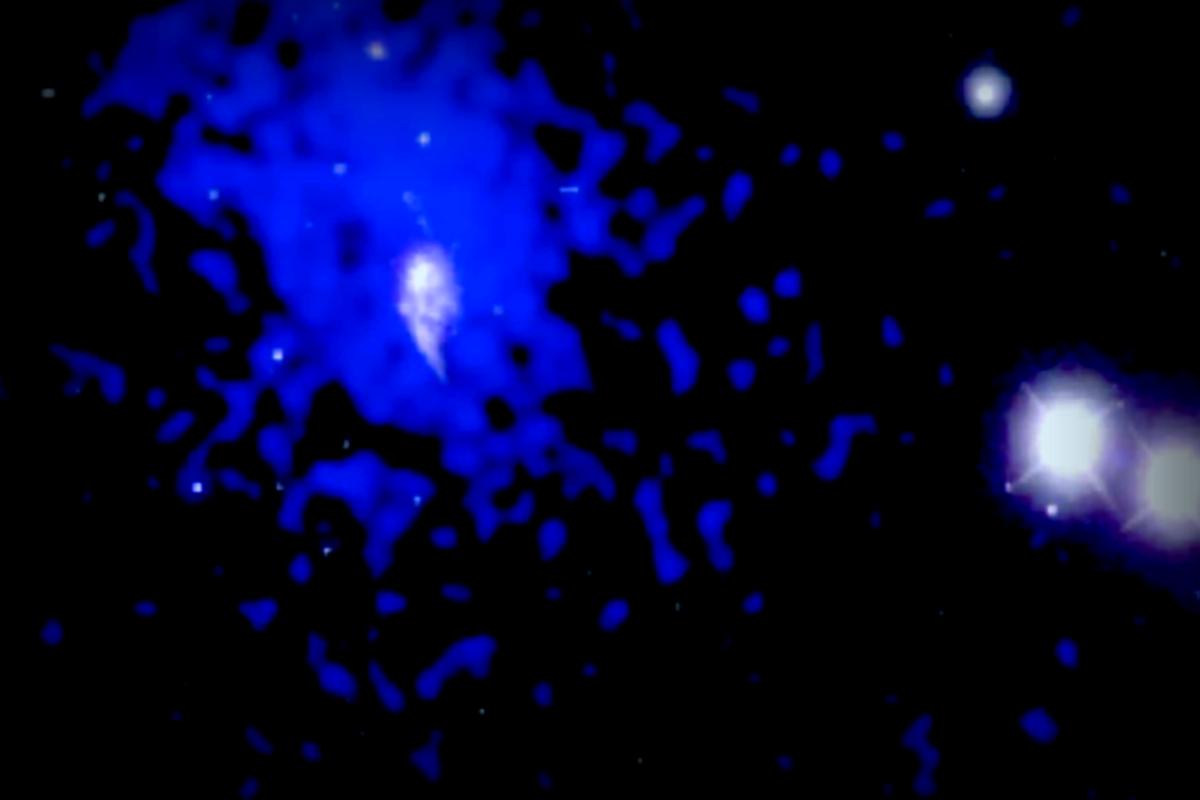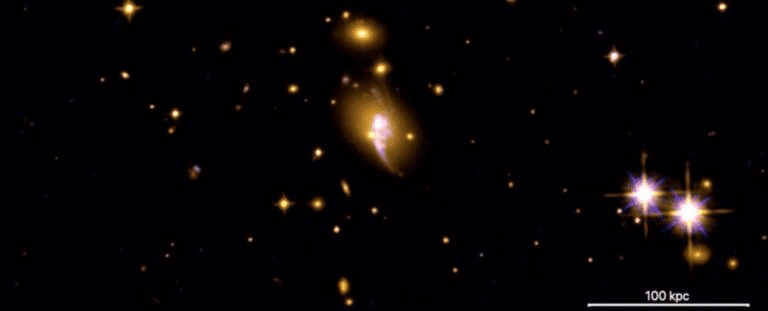Astronomers are buzzing about a fascinating discovery: they’ve caught a supermassive black hole “in action” as it starts to awaken! This cosmic phenomenon is located in the CHIPS 1911+4455 galaxy cluster, over 6 billion light-years from Earth. According to a report from the National Radio Astronomy Observatory (NRAO), this rare sighting gives us a unique first look at how black holes begin their active life and alter their surroundings. By employing top-notch telescopic technology like the Very Long Baseline Array (VLBA) and the Very Large Array (VLA), researchers managed to capture amazing details of this awakening.
This black hole is now only 1,000 years into its new active phase, likened to a cosmic newborn. It gives scientists a valuable chance to explore how black holes change from inactive to active. This discovery is vital for our understanding of the work these colossal entities do, bridging a significant knowledge gap about the early life phases of black holes.
A Glimpse into the Awakening of Cosmic Behemoths
The transition of black holes from dormant to active is still mostly a mystery, especially since astronomers have primarily studied those that have been active for millions of years. The recently stirred black hole in CHIPS 1911+4455 gives us a rare “before” glimpse of a black hole’s early activity. Myriam Gitti from the University of Bologna notes, “The jets are so young and small that they haven’t yet been able to clear away the surrounding hot gas, making it an ideal natural lab for observing how black holes alter their cosmic habitats.” This stage is crucial as it allows us to examine how black holes interact with their surroundings in real time.
In general, mature black holes can push out giant jets of material spanning tens of thousands of light-years. However, this young black hole’s jets reach just about 100 light-years. While that’s still vast on our scale, it’s minuscule by black hole standards. Hence, the size of these jets creates a perfect condition for scientists to study nascent black hole behaviors at the dawn of their activity. Such window opportunities are rare, rendering this find a vital part of understanding supermassive black hole dynamics.
The Burst of New Stars and Its Link to Black Hole Activation
Another captivating part of this galaxy with the awakened black hole is its incredible star-formation rate. It’s churning out anywhere from 140 to 190 times the mass of our Sun every year—way more than our Milky Way, which only manages to birth about one Sun’s worth of stars annually. This frantic pace of star-making might give us clues regarding what triggers black holes to wake up. Researchers believe that the surrounding hot gas is cooling effectively, providing the essential materials needed to fuel the black hole’s revival.
This relationship between rapid star formation and black hole activity isn’t new but remains an ongoing mystery in astrophysics. Gas and dust around galaxies often serve dual roles as the core for new stars and the energy source for supermassive black holes, which plays a significant part in unraveling the saga of galaxy development and evolution.
Supermassive Black Holes: Central Players in Galaxy Evolution
Supermassive black holes aren’t mere bystanders in the cosmic scheme but rather act as significant players in governing the trajectory of their host galaxies. They help dictate star formation rates, influencing a galaxy’s structural evolution over an immensely long timeframe. This newly revived black hole presents a unique glimpse into how these titanic bodies begin to engage with their environments, shaping matter distribution and star formation.
Grasping how these black holes exert their incredible influence is key to tackling critical questions about galaxy evolution. They can control the flow of gas and dust in their home galaxies, potentially stopping rampant star growth or otherwise maintaining the galaxy’s overall balance. Observing a black hole precisely at the start of its active phase provides valuable insights into how these cosmic giants expand and evolve.
Cutting-Edge Telescopic Technology Unlocks Secrets of Black Hole Behaviors
A team of astronomers capitalized on cutting-edge telescopic technology to witness this rare cosmic event. By utilizing VLBA and VLA, they could explore deep into space with such pin-point accuracy that they could catch minute details of the black hole’s actions, akin to reading a newspaper from across thousands of miles. This technology is crucial for black hole monitoring since their behaviors often unfold over extensive time spans and the jets they emit, though faint, are packed with vital information.
The combined use of various telescopes allowed the researchers to collect different types of data, providing a well-rounded understanding of this phenomenon. Some telescopes provided ultra-high resolution, vital for observing the jets’ fine structures, while others picked up weak signals tied to star creation. This multi-layered approach culminated in a fuller picture of how black holes function during their formative stages.
Understanding a Unique “Before” Moment in Black Hole Evolution
Typically, astronomers analyze black holes with millions of years of activity under their belts, presenting challenges in observing initial environmental influences. But the awakened black hole in CHIPS 1911+4455 offers a valuable “before” snapshot, enabling scientists to explore the basics of black hole behavior live. Watching its interactions as it gets going allows researchers to unveil processes that are crucial in understanding how black holes begin to shape their surroundings.
Studying this early-stage black hole activity may open the door to breakthroughs in astrophysical research, helping experts refine models surrounding black hole and galaxy formation. As black holes grow, they leave distinguishing marks capable of revealing significant insights about the broader structures of the cosmos, including the inception of galaxies, stars, and cosmic clusters. The identification of this cosmic “newborn” can be a turning point in the ongoing research on replicating black hole life cycles.




















